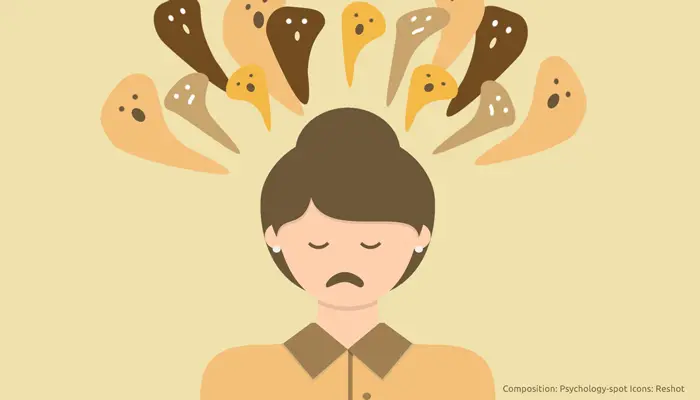
Fallacies are arguments that seem valid at first glance, but in reality they are not. We all fall into its trap. Some fallacies are committed intentionally to persuade or manipulate others, while others are committed unintentionally due to careless logic of thought or ignorance. The slippery slope fallacy is one of the most common and damaging, yet little known, so it is difficult to detect and dismantle.
What is the Slippery Slope Fallacy?
This fallacy is based on the idea that taking action A will drag us down a slippery slope that will inevitably lead us to action B. And, of course, B is horrible. Therefore, if we do not want to end up on scenario B, it is better never to take action A.
Basically, it is a biased method of persuasion or manipulation that acts as a warning against an outcome that the person presenting the argument does not want to materialize because he considers it to be negative or even harmful.
However, in general terms, this reasoning is often incorrect because it does not provide arguments to show that such a slippery slope exists. In other words, when inevitability is not proven, the reasoning becomes a fallacy.
The slippery slope fallacy is often used as an “argument” to stop revolutionary, new or different proposals that generate fear to the power or in a part of the population, generally more conservative. For example, this argument has been used to prevent the legalization of marijuana for medicinal purposes. The detractors of this measure argue that it would open the way for the complete legalization of all types of drugs and, therefore, lead to an exponential increase in harmful use. However, legalizing a drug for medicinal purposes in no way implies legalizing the use of other harmful drugs.
The slippery slope fallacy has also been used against voluntary euthanasia to indicate that it should be prohibited from the beginning because if we do not do it, sooner or later we will be forced to accept other types of euthanasia that are unjustifiable. However, accepting voluntary euthanasia for terminally ill people does not necessarily mean accepting other forms of euthanasia.
Gun control laws in countries such as the United States have also been challenged by arguments that use the slippery slope fallacy. There are those who claim that if any type of gun control is imposed, the next step will be to eliminate them completely. And if that happens, they will not be able to defend themselves against criminals and terrorist attacks, in which case criminals and terrorists will end up taking over the country. Obviously, one thing does not inevitably lead to the other.
Risk and fear as deterrents
The slippery slope fallacy uses the “unavoidable” risk and fear it generates. In this way, its arguments activate our emotional brain and deactivate our logical thinking, preventing us from rationally assessing risks.
However, a risk is nothing more than the probability that an event with a negative impact will occur or that certain factors or decisions increase the chances of it occurring. Life is a risk, but articulating the narrative discourse around a concatenation of risks that do not necessarily have a causal relationship implies generating fear, anxiety and anger unnecessarily in order to manipulate.
When these affective states take over, a full-blown emotional hijacking occurs and we cannot think clearly. The mere possibility of B happening is so frightening to us that we prefer to avoid A, if only out of an excess of caution.
However, succumbing to the slippery slope fallacy can lock us into too narrow a comfort zone where we never try anything new or dare to undertake new projects. At the social level, this fallacy condemns us to immobility, tying ourselves to conservative values and old ways of doing things that do not foresee natural evolution. Therefore, this excessively cautious behavior ends up being maladaptive.
How to detect and disarm the Slippery Slope Fallacy?
The best weapon we have against the slippery slope fallacy is critical thinking. Critical thinking will allow us to realize that there is no linear relationship between A and B. However, in order to think clearly, we first need to assume a psychological distance that allows us to emotionally detach ourselves from the arguments presented by other people.
If B’s perspective generates fear and anxiety, we will not be able to realize the fallacy that it hides. Therefore, we must ask ourselves: What is the relationship between A and B? Will taking action A inevitably lead to B? What can we do to avoid B? We must bear in mind that the simple “it could happen” is not a valid answer. Instead, we must anticipate the possible outcomes of action A by assessing the real possibilities of action B.
In any case, we must bear in mind that we cannot decipher the future, so it is not possible to guarantee with 100% certainty that a certain event will occur. In addition, there is often a period of time between the occurrence of A and B in which different factors can intervene that increase or decrease the chances that the unwanted event will occur.
The slippery slope fallacy assumes that the transition process between A and B is direct and almost immediate, it does not foresee the possibility of stopping in the middle. However, in real life this is not always the case. In fact, we often have the opportunity to stop before we reach the point of no return. Many times we can stop the transition between the start and end points.
Not all the slippery slope warnings are fallacious
It is worth clarifying that all the slippery slope arguments are not inherently fallacious. In some cases that warning may be based on a logical form of reasoning indicating a high probability that the unwanted event will occur.
For example, thinking that if we allow people starting bonfires in forests leaving them unattended, we are likely to end up with a large forest fire is not a fallacy but a common sense forecast.
To determine if a slippery slope is real or just a fallacy, you have to look at all the pieces that lead to the final event (B) and the connection between them. The more pieces are missing on that slope, the more disconnected they are, and the more distance there is between point A and B, the more likely it is a fallacy.
Sources:
Walton, D. (2015) The Basic Slippery Slope Argument. Informal Logic; 35(3): 273–311.
Lillo, M. et. Al. (2014) Toward an experimental account of argumentation: the case of the slippery slope and the ad hominem arguments. Front Psychol; 5: 1420.
Corner, A. et. Al. (2011) The Psychological Mechanism of the Slippery Slope Argument. Journal of Memory and Language; 64(2): 133-152.



